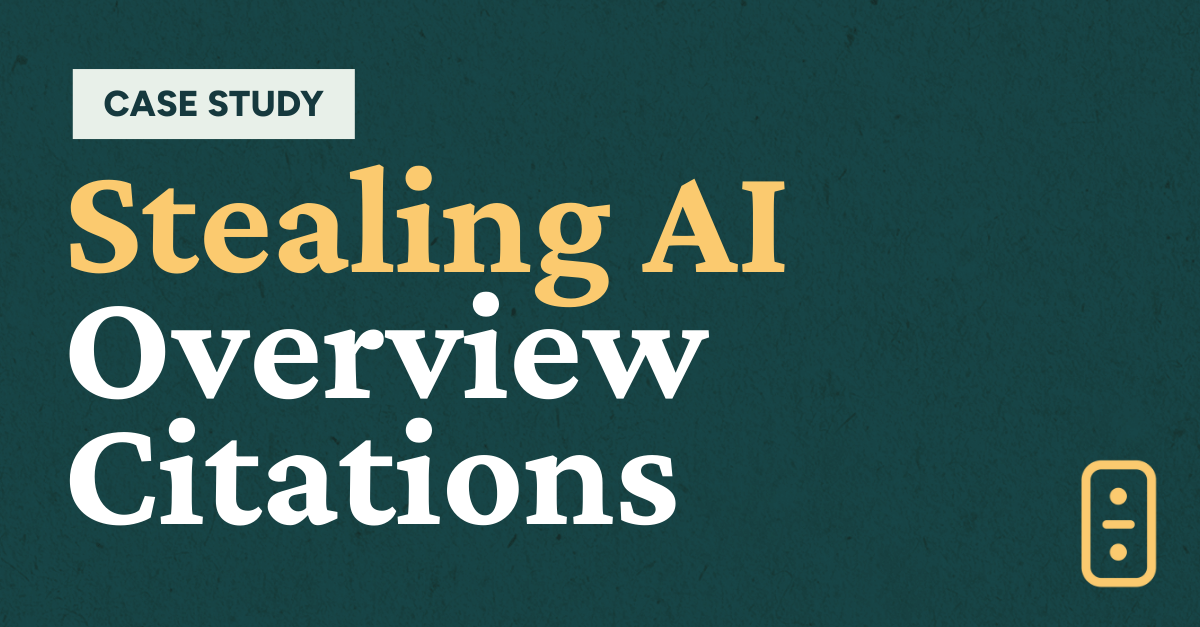Search Engine Optimization (SEO) has always been a bit of a balancing act. The major search engines, dominated by Google and Bing, have had to balance the needs of an audience demanding highly relevant information and an industry that seeks to prioritize its content above the competition. Amongst the many honest brokers, the SEO industry has also attracted many bad players, meaning the search engines have had to constantly change the rules to guarantee the quality of their Search Engine Results Pages (SERPs).
It would be fair to say that after a significant Google-shaped mass extinction event killed off the likes of AltaVista, Excite, HotBot, and the rather jovial Ask Jeeves, the search landscape has been pretty stable over the last two decades, meaning search marketers have only really had to stay on the right side of one or two algorithms.
AI-Driven Search Changes Everything
Nothing stays the same forever, and AI-driven search has shaken up the search market more than any other change in recent years. To say that the SEO industry is nervous might be an understatement.
Here’s the problem:
AI-driven search tools often seek to answer users’ search queries using a “chat-bot” style response known as “featured snippets” and “direct answers”. Many content publishers are worried that these in-app, conversational replies will be enough to satisfy users’ curiosity without the need to visit their websites. If your business makes money by running adverts alongside your content or selling subscriptions, the drop in traffic may lead to a sudden decrease in revenues and cause significant operational challenges.
The threat is being taken seriously by many major publishers and the organizations representing them. Late last year, several popular news and information publishers, including The BBC, The New York Times, CNN, Reuters, and The Guardian, took steps to actively block their content from generative AI web crawlers from accessing their copyrighted materials.
But should publishers really be so worried about AI-driven search? Before we can answer that question, it’s crucial for us to understand what exactly we are dealing with.
What is AI-Driven Search?
AI-driven search typically involves using advanced AI models like natural language processing (NLP), machine learning (ML), and deep learning to understand user intent better, provide more accurate results, and personalize search experiences. AI-driven search engines can interpret complex queries, recognize patterns, and even predict user needs based on historical data and context.
How AI-Driven Search Helps Users Find Relevant Content
Key features of AI-driven search include:
- Natural Language Understanding (NLU): AI models can comprehend and process natural language queries, allowing search engines to better understand the context and nuances behind search terms.
- Personalization: AI can analyze user behavior and preferences over time, delivering more tailored search results based on past interactions and inferred interests.
- Voice and Visual Search: AI enhances voice search capabilities by interpreting spoken queries and also supports visual search, where users can search using images instead of text.
- Predictive Search: AI can predict what users are likely to search for next or what information they might need, offering suggestions or completing queries as they type.
- Content Understanding: AI can better understand the content of web pages, going beyond just keyword matching to grasp the meaning, sentiment, and relevance of the content.
5 Ways AI-Driven Search Will Impact SEO
AI-driven search can reduce page views, mainly because of the way it enhances search engines’ ability to deliver precise, relevant, and often immediate answers to user queries. Here’s how it can lead to fewer page views:
1. Featured Snippets and Direct Answers
AI-driven search engines increasingly present direct answers, featured snippets, or “zero-click” results at the top of the search results page (SERP). These snippets provide users with immediate information, eliminating the need for them to click through to a website. While this improves the user experience by saving time, it can reduce the number of page views for content providers.
2. Improved Search Intent Matching
AI’s ability to better understand and match user intent means that search engines can immediately deliver the most relevant content. For instance, if a user searches for ‘best Italian restaurants near me ‘, AI can understand the user’s intent and provide a list of top-rated Italian restaurants in their vicinity. This means users are more likely to find exactly what they’re looking for on the first or second result, reducing the need to explore multiple pages and potentially leading to fewer overall clicks on search results.
3. Voice Search
With the rise of voice search, often powered by AI, users receive spoken responses to their queries without needing to visit a website at all. Voice assistants like Google Assistant or Amazon Alexa often summarize information from a web page, further decreasing the need for users to click through to the source.
4. Personalized Search Results
AI-driven personalization tailors search results to individual users based on their past behavior, preferences, and context. While this increases the relevance of the results for the user, it can also mean that they get what they need with fewer clicks, again leading to a potential reduction in overall page views.
5. Visual and Predictive Search
AI also powers visual and predictive search features, where users can search by uploading an image or receive search suggestions before they finish typing. These innovations streamline the search process, allowing users to find exactly what they need with minimal effort, potentially reducing the number of pages they visit.
Strategies to Reduce the Negative Impact of AI-Driven Search
Make no mistake: once the genie is out of the bottle, there’s no going back. That’s just not how digital technologies work. So, what strategies should SEO teams and publishers adopt to ride the wave and stay ahead of the curve in AI-driven search? We recommend the following three steps:
- Focus on quality over quantity: The focus for SEO will increasingly be on creating content that is comprehensive and authoritative enough to capture those few but highly valuable clicks. Quality and relevance will outweigh sheer volume of content.
- Optimize content for zero-click searches: While fewer page views can be a downside, being featured in snippets or direct answers can significantly boost brand visibility and authority. SEO strategies might include optimizing content to be featured in these positions, even if it results in fewer clicks.
- Diversification of traffic sources: To counteract potential declines in page views from search engines, businesses may invest more in other traffic sources, such as social media, email marketing, and direct traffic, ensuring they aren’t overly reliant on organic search.
Email and Social Media Are More Vital Than Ever
The point about diversification of traffic sources is vitally important, especially if you need help getting your head around AI-driven search (it’ll take time). You already know how email marketing and social media works. You understand it helps you reach a highly engaged audience and drive customer lifetime value. While you are figuring out how the brave new world of SEO looks in the age of AI-driven search, it may be a good idea to re-invest in a more robust email marketing and social media strategy.
Learn More
To learn more about how the digital marketing experts at emfluence can help you better understand the evolving SEO landscape, the emergence of AI-driven search and how email marketing and social media can be used to drive more traffic and profitable engagement to your website, contact us today on expert@emfluence.com.



